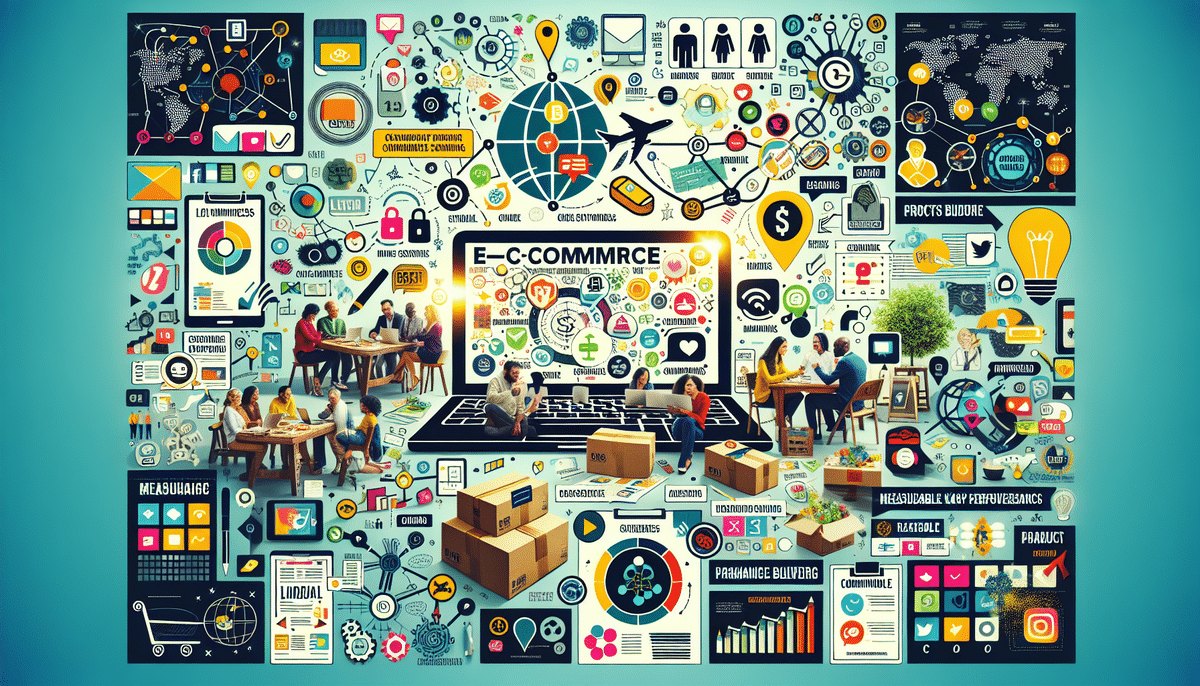Discover the Benefits of Product Exclusives
In today's competitive market, distinguishing your business from others is crucial. Offering product exclusives can be the key to setting your brand apart, attracting new customers, and fostering loyalty. This article delves into the advantages of exclusive products and provides actionable strategies for developing and launching successful exclusives.
Why Product Exclusives are Vital for Your Business
Enhancing Brand Recognition and Loyalty
Exclusive products help your business stand out by offering unique items that cannot be found elsewhere. This exclusivity not only attracts customers seeking distinct products but also builds strong brand recognition and loyalty. Research indicates that loyal customers are worth up to 10 times as much as their first purchase, highlighting the importance of fostering long-term relationships through exclusives.
Gaining Competitive Advantage
In a saturated market, having exclusive products provides a unique selling proposition (USP) that differentiates your business from competitors. According to a Harvard Business Review study, businesses with clear USPs are 50% more likely to achieve higher market share. Exclusive products can serve as this USP, making your offerings more attractive to potential customers.
Strengthening Supplier Relationships
Being the sole distributor of a particular product enhances your leverage in negotiations with suppliers. This advantage can lead to better pricing and favorable terms, ultimately increasing your profit margins. Additionally, exclusive partnerships with suppliers can result in priority access to new and innovative products, keeping your inventory fresh and appealing.
Testing Market Demand and Innovation
Exclusive products allow you to experiment with new ideas and gauge customer interest without the pressure of competing with similar offerings. This approach can lead to valuable insights and inform future product development. According to a report by Forbes Business Council, companies that innovate through exclusive products see a 30% increase in customer engagement.
Strategic Implementation of Product Exclusives
Identifying Target Audience and Preferences
Understanding your target audience is the first step in creating successful exclusives. Conduct market research to identify customer needs, preferences, and purchasing behavior. Tools like SurveyMonkey and Google Analytics can provide valuable insights into consumer trends and preferences.
Developing High-Quality, Unique Products
Quality is paramount when introducing exclusive products. Ensure that your offerings meet high standards and offer unique features that differentiate them from competitors. Collaborate with designers and manufacturers to create innovative products that resonate with your audience.
Effective Pricing Strategies
Pricing exclusives requires a balance between perceived value and affordability. Conduct competitive analysis to determine optimal pricing. According to Inc.com, premium pricing can enhance the perceived value of exclusive products, while competitive pricing can drive higher volume sales.
Robust Marketing Campaigns
A strong marketing campaign is essential for the success of exclusive products. Utilize multiple channels such as social media, email marketing, and influencer partnerships to generate buzz. Creating teaser campaigns and limited-time offers can create urgency and excitement around the launch.
Monitoring Performance and Feedback
After launching an exclusive product, continuously monitor its performance through sales data, customer feedback, and market trends. Tools like Tableau and SBA Business Guide can help analyze data and inform strategic adjustments.
Industries That Thrive on Product Exclusives
Fashion and Beauty
The fashion and beauty industries frequently leverage exclusives through limited edition releases and unique collaborations. For instance, Nike often collaborates with designers and celebrities to create exclusive sneaker lines that generate significant demand and media coverage.
Technology and Gadgets
Tech companies use exclusives to showcase innovation and attract early adopters. Apple regularly releases exclusive product colors and features, enhancing its brand prestige and customer loyalty.
Food and Beverage
Exclusive products in the food and beverage sector, such as limited edition flavors or seasonal items, create excitement and drive sales. Brands like Starbucks introduce seasonal beverages that become customer favorites and generate seasonal traffic.
Home Decor and Furniture
Offering exclusive home decor and furniture pieces allows businesses to cater to niche markets and design enthusiasts. Limited edition collections can position a brand as a leader in design innovation and quality.
Overcoming Challenges in Product Exclusivity
Managing Production Costs
Exclusive products often involve higher production costs due to limited runs and specialized materials. To mitigate this, ensure efficient production processes and negotiate favorable terms with suppliers. Management Study Guide offers strategies on effective cost management.
Accurately Forecasting Demand
Predicting the demand for exclusive products can be challenging. Utilize data analytics and market research to make informed estimates. Incorporating feedback loops can help adjust production based on real-time demand.
Handling Supplier Resistance
Suppliers may be hesitant to partner on exclusive products. Building strong relationships and demonstrating the mutual benefits of exclusivity can overcome resistance. Clear communication and mutually beneficial agreements are key.
Managing Customer Expectations
Customers expect high quality and unique features from exclusive products. Ensuring consistent quality and delivering on promises is essential to maintain trust and satisfaction. Transparent communication about product availability and features can help manage expectations.
Maximizing Success Through Marketing and Pricing
Leveraging Social Media for Promotion
Social media platforms are powerful tools for promoting exclusive products. Strategies include building anticipation with teaser posts, using targeted hashtags, collaborating with influencers, and encouraging user-generated content. According to Social Media Examiner, effective social media campaigns can increase brand visibility by up to 70%.
Implementing Strategic Pricing
Developing a pricing strategy that reflects the exclusivity and value of your products is crucial. Consider premium pricing to enhance perceived value or competitive pricing to drive volume. Additionally, offering financing options or bundles can make exclusives more accessible without diluting their exclusive status.
Creating Anticipation and Hype
Building excitement before a product launch can significantly impact its success. Tactics include teaser campaigns, exclusive previews for loyal customers, collaborations with influencers, and strategic email marketing. Creating a countdown to the launch date can also heighten anticipation and drive engagement.
Measuring and Sustaining the Success of Product Exclusives
Tracking Performance Metrics
Evaluate the success of exclusive products by monitoring key performance indicators (KPIs) such as sales figures, customer acquisition rates, and return on investment (ROI). Tools like Google Analytics and Kissmetrics can provide valuable insights into product performance and customer behavior.
Gathering and Utilizing Customer Feedback
Customer feedback is invaluable for refining exclusive products and strategies. Implement surveys, reviews, and direct feedback channels to understand customer satisfaction and areas for improvement. Platforms like SurveyMonkey facilitate effective feedback collection and analysis.
Adapting Strategies for Continuous Improvement
Use the insights gained from performance metrics and customer feedback to adapt and enhance your exclusivity strategies. This continuous improvement approach ensures that your exclusive products remain relevant and desirable, fostering long-term business growth.
Case Studies: Successful Product Exclusives from Leading Brands
Apple's Limited Edition Releases
Apple frequently releases products with exclusive features or colors, enhancing brand prestige and driving customer demand. These limited editions often sell out quickly, creating a sense of urgency and exclusivity.
Nike's Collaborative Sneaker Lines
Nike's collaborations with designers and celebrities result in highly sought-after sneaker lines. These exclusives generate significant buzz and media coverage, strengthening Nike's position as a leader in the athletic footwear market.
Starbucks' Seasonal Beverages
Starbucks introduces seasonal beverages that become customer favorites and drive seasonal traffic. These limited-time offers create anticipation and encourage repeat visits, contributing to Starbucks' continued success.
Conclusion
Product exclusives offer numerous benefits, including enhanced brand recognition, competitive advantage, and increased customer loyalty. By strategically implementing exclusive products and overcoming associated challenges, businesses can effectively stand out in a crowded market. Leveraging marketing strategies and maintaining a focus on quality and customer satisfaction will ensure the long-term success of your exclusive offerings.






















